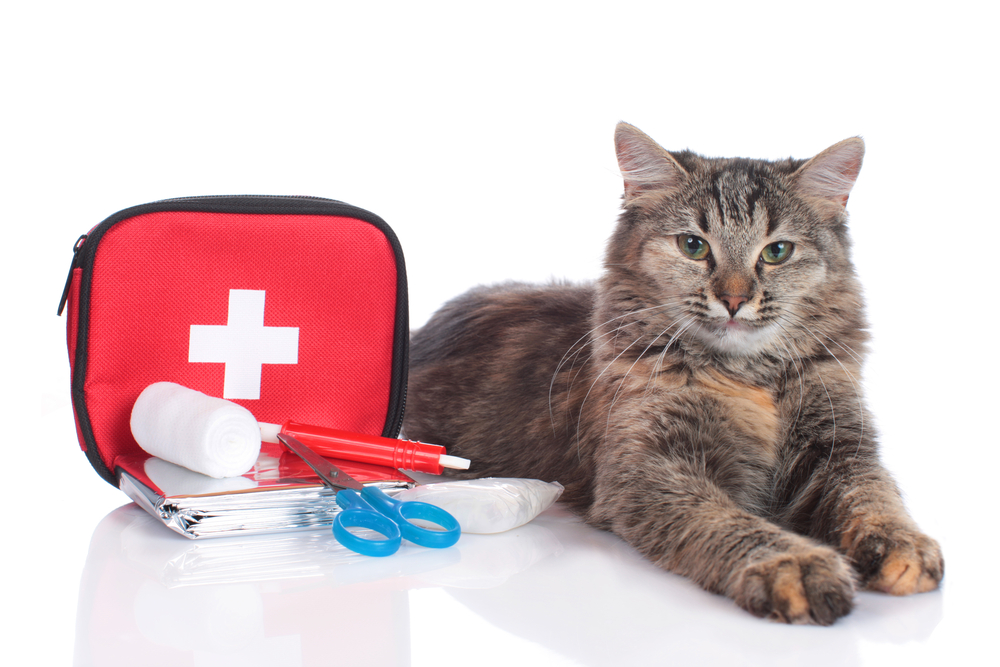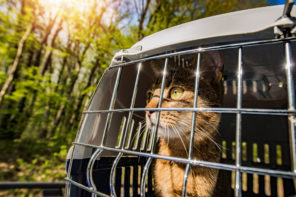When you’re adventuring with your kitty, it’s important to always put safety first, and that means never setting foot outside without a well-stocked first-aid kit for both you and your feline friend.
You likely have a pretty good idea of what belongs in a first-aid kit for yourself, and luckily ones designed for cats aren’t too different. In fact, a good way to start assembling a first-aid kit for felines is by purchasing one for people and adding a few select items to it. You can also purchase a cat-specific kit online or from your local pet store.
When creating a kitty first-aid kit, first obtain a waterproof box or case and tape the following phone numbers and addresses inside:
- Your veterinarian
- The local 24-hour emergency vet
- ASPCA Poison Control Center: (888) 426-4435
It’s also a good idea to program these numbers into your cellphone.
MORE: 8 best apps for adventure cat owners
Essentials for a cat first-aid kit
- Pet first-aid book (It’s a good idea to familiarize yourself with basic first aid, as well as the organization of the book so you can quickly find the information you need in the event of an emergency. Consider the Cat First Aid book by the American Red Cross.)
- Paperwork for your cat (The Humane Society suggests including proof of rabies-vaccination status, copies of other important medical records and a current photo of your pet.)
- Absorbent gauze pads
- Adhesive tape
- Antiseptic wipes, lotion or spray
- Cotton balls or swabs
- Hydrogen peroxide
- Eyewash (The human version is OK to use.)
- Ice pack
- Non-latex disposable gloves
- Rectal thermometer
- Petroleum jelly to lubricate the thermometer
- Gauze rolls
- Sterile non-stick gauze pads for bandages (The Humane Society recommends self-cling bandages. This type of bandage sticks itself — but not to fur — and is available at pet stores.)
- Scissors with blunt ends
- Tweezers or tick key*
*Your cat should be up to date on flea, tick and heartworm treatments before heading outside.
MORE: 14 essentials for hiking and camping with a cat
In addition to these items, your cat’s first-aid kit should also include anything your veterinarian has prescribed or recommended for your pet, including any medications. And remember to regularly check the supplies in your cat’s first-aid kit and replace any expired items.
Other items to consider
- A towel and/or muzzle (If your kitty is sick or injured, you may need these items to protect yourself while you administer first aid.)
- Diphenhydramine a.k.a. Benadryl (This can be useful if your cat has allergies or is stung by an insect; however, you should include this medication only if it’s approved by your veterinarian. Your vet will tell you the correct dosage to administer.)
If you truly want to put safety “purrst,” familiarize yourself with cat CPR, consider taking a pet first-aid course, and be sure to download the American Red Cross pet first-aid app.
Also, watch the ASPCA’s video below to learn how to build a pet poison-prevention kit.




